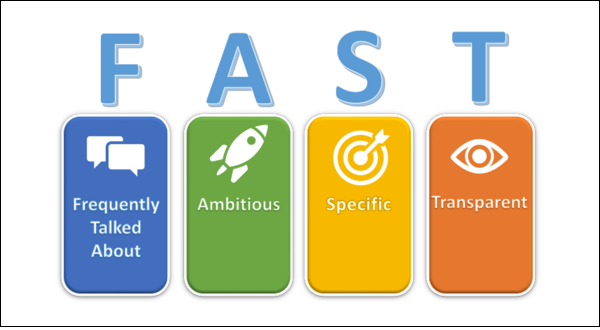It was in the early 1950’s when the concept of “management by objectives” was introduced by Peter Drucker. The idea was that the boss would agree a set of goals for the year with each subordinate and then review the performance against these goals. Managers also learned about the acronym SMART for goal setting meaning goals had to be specific, measurable, achievable, realistic and time-bound. This methodology of goal setting has become so established that few managers have actually questioned if this approach works.
One fundamental issue is that both managers and subordinates set easy-to- reach goals so that both sides feel good when these are achieved. Another issue is that the goals negotiated for various staff do not necessary align with the overall goals of the organization. In fact, it is hard to find an organization where one member of the team knows the goals of the other members. Quite often, these goals are kept confidential as matters to be discussed solely at annual appraisal time between the manager and his/her subordinate.
So SMART goals focus too much on individual performance, are not known to anyone other than the individual in question and probably get discussed just once or twice at the beginning and end of the year.
What many organizations are now discovering is that goals can be so crucial to achieving strategic organizational objectives only when these take into account inter-dependencies across teams, departments and silos and when it is possible to make adjustments and course corrections frequently.
FAST Objectives not SMART
New research based on data from companies like Google, Intel and others
has revealed that there are four key principles for creation of an effective goal setting system. These four principles are summarized by the acronym FAST, so you can now throw away the SMART acronym for good or leave it in cold storage at least if you don’t want to abandon old thinking this quickly.
FAST goals are:
Frequently discussed
Ambitious in scope
Specific in terms of metrics
Transparent for everyone in team/organization to see
Frequent discussion ensures ongoing review, remedial intervention and course corrections.
Ambitious goals enable out-of-the-box thinking and creativity.
Specific goals are of course necessary to allow for effective review and monitoring. Setting a sales goal as “make 50 customer visits” is much easier to review than “become more proactive with clients”.
Finally, transparency is key to creating a culture of accountability and performance. A number of organizations were surprised to learn that when employees were given the choice to keep their goals private or transparent, most preferred to post their goals for others to see. Transparent goals makes it possible for employees to not only manage their own goals but also to offer suggestions about the goals of their colleagues.


